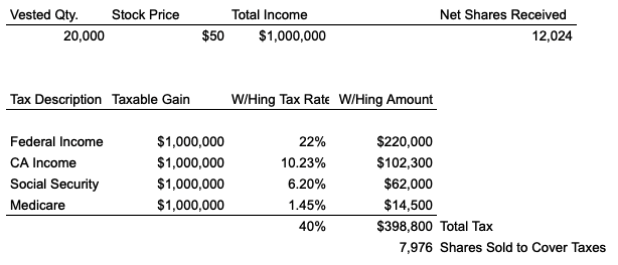If your company is preparing for an Initial Public Offering (IPO), it’s an exciting time—especially if you hold Incentive Stock Options (ISOs). But before you rush to exercise those options, there are crucial considerations that could make or break your financial strategy.
What are Incentive Stock Options (ISOs)?
Incentive Stock Options are a type of employee stock option that comes with potential tax benefits, making them an attractive component of your compensation. They allow you to buy company stock at a set “exercise price,” typically the market value at the time of the grant. The options become exercisable according to a vesting schedule, which usually spans four years, and they come with an expiration date by which you must take action.
If you don’t exercise your ISOs by the expiration date, they expire and are worthless. Generally, you have up to 10 years if you’re still employed, but if you’ve left the company, this window can shrink to as little as 90 days or sooner if your company is nearing an IPO.
Dig out that options agreement to confirm how your ISOs are treated with an IPO! Some sample language can be found in the Reddit stock agreement.
ISOs, if managed properly, may only be taxed at the more favorable long-term capital gains rate. However, you must hold your shares for at least one year after exercising and two years after the grant date. Meeting these requirements means the sale of your ISOs will qualify for long-term capital gains tax, which could result in a significant tax savings compared to ordinary income tax rates.
What are Non-Qualified Stock Options (NQSOs)?
Before diving into the IPO conversation, let’s quickly break down how ISOs differ from Non-Qualified Stock Options (NQSOs).
NQSOs are generally given early on in a startup’s trajectory, to advisors, or as additional incentives as employees reach the ISO limit.
With NQSOs, you’ll pay taxes at the time of exercise, recognizing ordinary income on the difference between the stock’s value and your exercise price. This is a big difference from ISOs, which may be eligible for long term capital gains treatment at their sale.
However, ISOs come with limitations. You can only vest up to $100,000 in value of ISOs in a given calendar year to enjoy this tax benefit. Anything over this amount is treated as NQSOs.
Check your stock portal to see if this ‘ISO/NQSO split’ is occurring over your vesting period. Often, this will happen more in the later years of vesting as the stock value quickly rises.
— Do you learn better from audio or video? Check out this conversation on our YouTube video about this topic HERE —
Be Aware of the AMT Trap
Even though ISOs offer appealing tax treatment, they come with a catch: the Alternative Minimum Tax (AMT). AMT is a parallel tax system that kicks in when certain “preference items,” like ISOs, push your tax liability higher.
The AMT system has only two tax rates, 26% and 28%, and a larger exemption rate (as of 2024). You only see AMT on your tax return if your AMT tax due is larger than your regular tax due.
When you exercise your ISOs, the difference between the stock’s current value and your exercise price (known as the bargain element) is included in your AMT calculation. If you’re exercising a small number of options, you might not notice the impact. However, if you exercise a large number of options, the AMT can take a big bite out of your finances.
For example, we’ve seen AMT taxes due soar to $250,000 or more on ISO larger exercises. So, before you exercise, make sure you have a tax professional in your corner to help you navigate the complexities.
The IPO Opportunity: Timing Your ISO Exercise
So, why exercise ISOs ahead of an IPO?
An IPO creates a liquid market for your company’s stock. By exercising your ISOs pre-IPO, you could lock in a lower stock price and start the clock on your long-term capital gains tax treatment.
However, the stock price could fluctuate dramatically after the IPO, making this a risky move if you expect an IPO soon. NASDAQ research from April 2021 showed that while 34% of IPOs gained over 10% in their first year, more than 50% lost 10% or more.
If your company is eyeing an IPO within the next 18-24 months, now might be a good time to assess how much cash you can afford to put at risk. Exercising a portion of your ISOs each year could help you spread out the AMT cost and mitigate some risk if the IPO is delayed. We like to call this ‘laddering’ our exercises (and potential sales) to minimize taxes across the board.
Not sure if an IPO is in your future? Check out our blog post on when to consider exercising stock options as a pre-IPO company here.
Case Study: Jane’s ISO Strategy
Let’s consider a real-world example. Jane, a long-term employee at a tech startup, is weighing her options ahead of the company’s IPO.
Jane received two ISO grants:
- 10,000 shares at $0.10 per share, which she exercised early with an 83(b) election.
- 10,000 shares at $3.00 per share, which she hasn’t yet exercised due to the cost to acquire them ($30,000).
With her company’s IPO on the horizon, Jane and her advisor reviewed her financial situation to determine how much cash she could comfortably invest in exercising her ISOs.
After accounting for her emergency savings and other expenses, she decided to allocate $10,000 toward her stock options.
Together, they calculated the potential AMT liability based on the current 409A valuation and the expected IPO price. By exercising some ISOs before the IPO this year and planning to sell RSUs after the IPO, they managed the risk while maximizing the tax benefits.
The Takeaway: Make an Informed Decision
Exercising ISOs ahead of an IPO can be a smart move, but it requires careful planning. Be sure to evaluate your financial situation, risk tolerance, and tax implications before making any decisions. Working with a financial advisor and tax professional can help ensure you navigate this complex process successfully.
If you’re considering exercising your ISOs before an IPO, weigh the risks, rewards, and your financial goals carefully. With the right strategy, you can maximize your wealth while minimizing unnecessary taxes.
Looking for a Financial Partner in your IPO journey? Schedule a call with us to learn more.
The above discussion is for informational purposes only. Recommendations are of a general nature, not based on knowledge of any individual’s specific needs or circumstances, and there is no intent to provide individual investment advisory, supervisory or management services.














